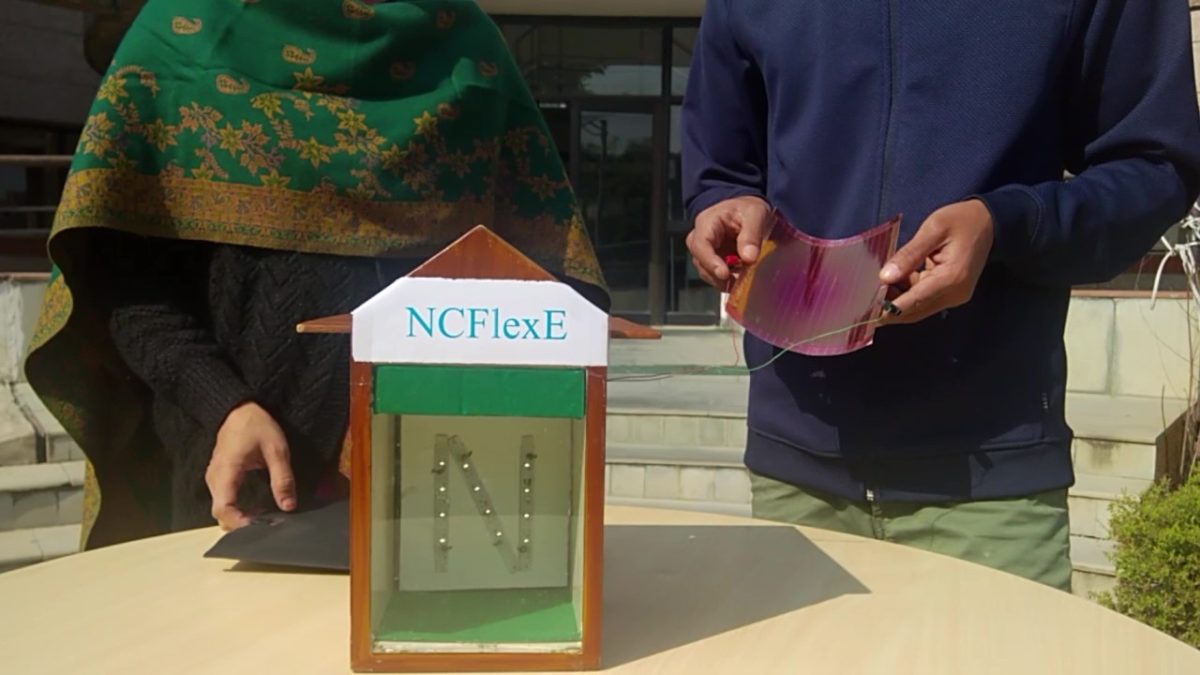Paper is an environment-friendly alternative to plastic and other non-biodegradable substrates to fabricate flexible organic solar photovoltaic (OPV) cells and panels. OPV cells and modules built on paper substrates are bendable, proving their utility for flexible electronics while leaving less debris at end-of-life disposal.
Indian Institute of Technology Kanpur (IIT Kanpur) researchers have fabricated 12×12 cm2 (active area 108 cm2) sub-modules from OPV cells built on paper substrates that exhibit performance comparable to a silicon PV device under illumination from a 1000-lux cool‐white light-emitting diode (LED).
Under ‘standard illumination’ (1 sun intensity and AM1.5G spectrum), the researchers demonstrated active-area power conversion efficiencies of up to 4.23% with PTB7:PCBM blend and 2.38% with P3HT:PCBM blend photoactive layers. They claim the results to be among the highest reported efficiencies for sub-modules of organic solar cells built on paper substrates, as of date.
“Due to better spectrum matching, the modules delivered a power density of up to 12 µW/cm2 under illumination from a 1000-lux cool‐white LED, which is comparable to 13 µW/cm2 from a silicon PV device (with a power conversion efficiency of 15% under standard illumination) for the same illumination. The results confirm the utility of these organic solar cells for indoor lighting environment,” electrical engineering professor S. Sundar Kumar Iyer from IIT Kanpur told pv magazine.
Prior to sub-module fabrication, an effective barrier layer to successfully build organic solar cells on paper substrates was developed.
“Small-area solar cells on paper substrates with efficiencies of 6.44 % with PTB7:PCBM blend and 3.37% with P3HT:PCBM blend photoactive layers were demonstrated. As of date, these are among the highest reported efficiency for organic solar cells built on paper substrates,” said professor Iyer.
According to the research team, choosing higher efficiency photoactive layers that are becoming available for organic solar cells should allow for building much higher efficiency sub-modules on paper substrates, which will be ideal for both indoor and outdoor applications.
The development work on OPV device and sub-modules on paper substrates is being pursued by a team of researchers including Eswaran Jayaraman, Madhu Rawat and Sambathkumar Balasubramanian, coordinated by professor Iyer at the National Centre for Flexible Electronics and the Samtel Centre for Display Technologies, IIT Kanpur. The research is supported by India’s Ministry of Electronics and Information Technology.
The findings are published in the journal Advanced Materials Technologies.
This content is protected by copyright and may not be reused. If you want to cooperate with us and would like to reuse some of our content, please contact: editors@pv-magazine.com.









Good Article
Should the numbers not be mW/cm2… rather than uW/cm2… as
• 1 microWatts is 0.000001W (1X10^-6 W)
• 1m2= 100cmx100cm = 10,000cm2
so…
12 uW/m2 = 12 X 10,000 X 0.000001 = 0.12W/m2…. instead of 120W/m2…
• 12mW/cm2 = 12X 0.001X10,000 = 120W/m2..???
The numbers correspond to LED light of 1000 lux. That is why the power generated per square cm is low. Under sunlight at noon, one should get a few W per sq. cm corresponding to the efficiency reported for the modules.